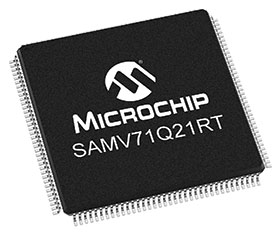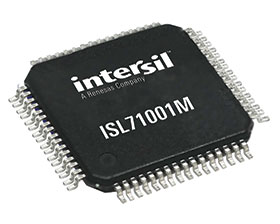
Humans have been sending things into space for more than 60 years, but such has been the cost and complexity involved that this endeavour has remained, until relatively recently, largely the domain of government-backed organisations. It is easy to understand why. Traditional satellites can cost hundreds of millions of dollars, with this price tag in part driven by the need to use expensive space-grade components, capable of operating for many years in extremely harsh conditions.
However, in the past few years there has been a massive change, with the advent of what’s termed ‘new space’. This has seen the focus shift towards commercial spaceflight, the ‘business of space’, with costs falling and businesses now creating their own large constellations of small satellites for a variety of purposes.
Typically operating in low-Earth orbit (LEO) of 1100 to 1300 km above the Earth’s surface, these small new space satellites can be built for as little as $500 000 to $1 million apiece. While this is by no means peanuts, it is a small fraction of the price of a traditional spacecraft and well within the means of even medium-sized corporations. These new space satellites are designed to last around five to eight years, compared to 15 to 20 years for the latter.
The opportunities afforded by new space mean that a company can relatively quickly create anything from its own IoT communications network, worldwide broadband Internet access or their own Earth observation system. The attractions of these possibilities are clear, particularly the way the creator gets complete control over how their system is designed and operated.

A new class of space-ready components emerges
Making this type of vision a reality is a seismic change that is taking place in the way satellites are designed and built. Traditionally, those creating satellites have used high-end, space-grade electronic components. These parts are typified by low volumes (less than 100 pieces) with extensive electrical, mechanical and radiation testing. The result is expensive components with, for example, a radiation-hardened FPGA costing up to $100 000 per unit or a radiation hardened analog-to-digital converter potentially costing over $10 000 each.
Today’s new space designers are looking for low-cost plastic equivalents of the traditional space grade components. But just simply choosing a commercial off-the-shelf (COTS) product and running an electrical, mechanical and radiation test campaign is a risky and expensive exercise. Many COTS products are just simply not sufficiently robust for use in space and therefore pose too much of a risk for satellite designers.
To bridge this gap, we are now seeing a new class of product emerging, offering plastic space-level components at much lower costs than their traditional counterparts. Sometimes called radiation tolerant, this shift is bringing with it a number of suppliers new to the space market. On the customer side too are many new companies entering this market.
But with more choice and new suppliers comes complexity and uncertainty for spacecraft engineers: how do you know the components you select are genuinely fit for use in orbit? Your satellite may not be costing hundreds of millions of dollars, but the sums involved are still considerable; you need to know you are using components that are up to the task.
To help you make informed choices, here are some of the key criteria to look for when choosing the critical components for your LEO satellite.

Picking the right parts for your design with confidence
When we talk about ‘critical components’, we mean any part that’s essential for the effective operation of your satellite. This includes the processor, power supply, clocks, communication links and to some degree, the memory.
First off, these components need to be capable of operating in temperatures as low as –55°C and as high as 125°C. While they may rarely reach these extremes, it is important this buffer exists to protect against exceptional circumstances. What’s more, with satellites in LEO orbiting the Earth many times per day, they need to be able to withstand repeated temperature cycling – from very cold when in the planet’s shadow, to very hot when in view of the Sun.
Second is radiation resistance; these ICs should normally be characterised for a total ionising dose (TID) of up to at least 30 krad (Si) – this characterisation could be done during development and not tested on every lot like a full space-grade component. Also single event effects (SEE) with a linear energy transfer (LET) up to 43 MeV. Again, this would be characterised during development. The parts should also be latch-up free to avoid catastrophic damage.
Additional options might include testing up to 2000 hours of burn-in, 500 temperature cycles and package moisture sensitivity testing. This is a significantly different development and manufacturing flow versus the traditional radiation hardened products, which as mentioned have many individual tests on each part in production – all of which drives up the IC cost.
Lastly, lead finish on the plastic package is also important to reduce the risk of tin whiskers. Some suppliers favour SnPb with <97% tin whilst others use a Ni/Pd/Au lead finish to eliminate the risk of tin whisker growth.

Why you also need functional flexibility
As well as being highly temperature and radiation resistant, satellites destined for commercial use need to offer their operators flexibility and responsiveness to new opportunities and demands. Businesses have grown accustomed to being able to conceive and launch new Earth-based products and services very quickly, tweaking the designs as they go, both pre- and post-launch. They are looking for similar flexibility when it comes to their satellite programmes, particularly when there is often a race to be first to market with a new capability.
Many satellites use a field-programmable gate array (FPGA) or an ASIC as the central processing unit. Traditionally the FPGA would be a one-time programmable product that offered program security but was not possible to change the content once programmed. This applies to the ASIC too. Newer Flash-based FPGAs offer the ability to reprogram the content but it is all or nothing and a failure during reprogramming, especially in space, could result in mission failure.

The Xilinx Zynq UltraScale Plus FPGA
There are not many FPGAs on the market suitable for use in space. Recent satellite programs have seen an increase in the use of Xilinx Space Grade SRAM-based FPGAs. Size, speed and FPGA resources have been a key reason for this success, as well as the ability to carry out partial reprogrammability in orbit. Customers have been able to easily add new features or patch vulnerabilities that emerge during the program irrespective of whether the hardware was on the ground or in orbit.
Now Xilinx has released certain members of the 16 nm Zynq UltraScale Plus FPGA-based system-on-chip (SoC) in a ruggedised organic package with a four-corner lid that allows easier cleaning and manufacturing. This series offers a wide range of powerful parts from EG devices featuring a quad-core ARM Cortex-A53 platform running up to 1,5 GHz, dual-core Cortex-R5 real-time processors, a Mali-400 MP2 graphics processing unit and 16 nm FinFET+ programmable logic.
The Zynq UltraScale+ EV devices add an integrated H.264/H.265 video codec capable of simultaneous encode and decode up to 4Kx2K (60 fps). Designed with high-definition video in mind, the addition of the new Zynq UltraScale+ RFSoCs with integrated multi-gigasample RF data converters and soft-decision forward error correction (SD-FEC) into an SoC architecture give designers even more choice. All of these parts are available, fully tested at temperature extremes of -55°C to +125°C.
Space suitable microprocessors
Of course, there will be situations where an FPGA offers more processing power than you need, perhaps for housekeeping-type tasks such as satellite temperature or voltage monitoring. Traditionally, these would also have required costly components, but designers can now benefit from lower-cost radiation tolerant microprocessors, including the Microchip ATMEGAS64 or ATMEGAS128.
These new 8-bit, 8 MHz microprocessors include a host of useful features such as PWM channels, 10-bit ADC, comparators and serial interface as well as on-board memory. The parts are available in plastic packages as well as footprint compatible ceramic packages, which could potentially save on design costs.
An exciting new addition to this series is the Microchip radiation tolerant ARM Cortex M7 SAMV71Q21. This product is based on the company’s successful commercial version running up to 300 MHz. It brings to space engineers a massive list of features including dual CAN, Ethernet, camera interface, 2 MB Flash and 12-bit ADC and DAC. The part is available in a 144-lead plastic package.

Memory too
GSI Technology has also entered the space race with the introduction of a 288 MB Sigma Quad II+ SRAM and 144 MB NBT SRAM that are radiation tolerant and available in plastic ball grid array as well as ceramic package.
Peripheral components
New Space FPGAs require suitable power supply components. The ISL71001M from Renesas Intersil is a radiation tolerant 6 A synchronous buck regulator in a 64-pin plastic QFP. This part is ideal for driving low-voltage, high-current FPGAs. Other new space component solutions include a controller area network (CAN) transceiver, digital isolators, voltage references and op-amps all tested and qualified for LEO applications and available in plastic packages.
Time to innovate
New space is opening up exciting opportunities for businesses, which can create completely new products, services and capabilities that were, until recently, impossible or impractical. Key to realising this potential is a new breed of low-cost, radiation tolerant, space suitable components, including microprocessors, FPGAs and peripheral components.
The crucial thing for designers and engineers to remember, however, is to choose components that are proven to be suitable for space and that offer genuine functional flexibility. Making the right choices can be the difference between creating the next big thing and launching a $500 000 white elephant. Picking the right parts will help ensure you get it right.
© Technews Publishing (Pty) Ltd | All Rights Reserved